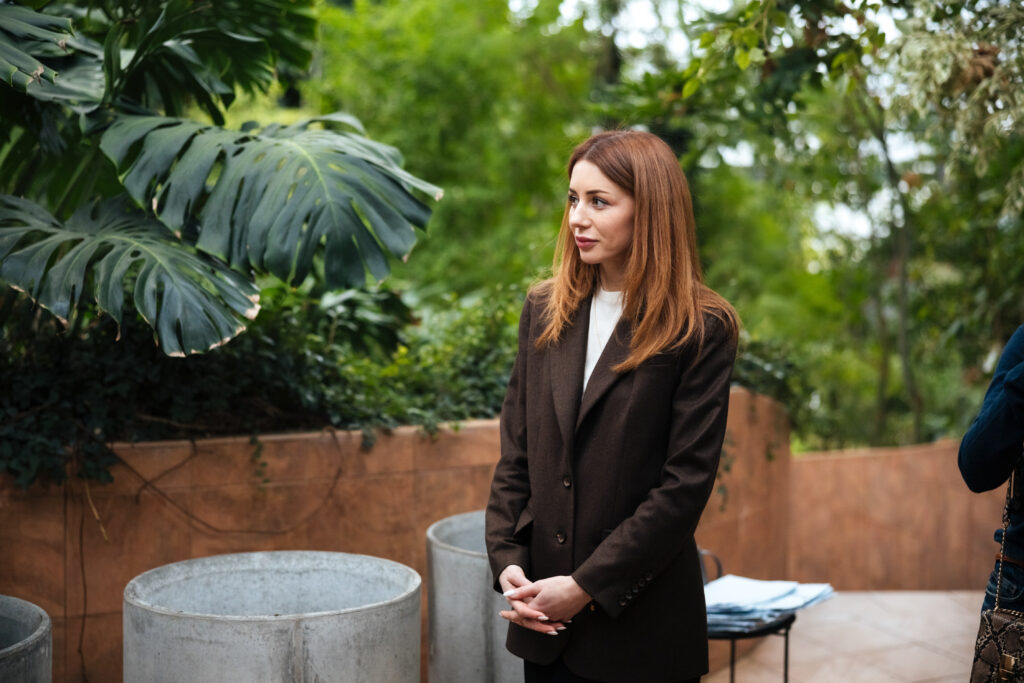Seeds from the walls of Ukraine pavilion at COP29 were planted in Kyiv
Seeds from the walls of Ukraine’s pavilion at COP29 planted in Kyiv
On World Wildlife Day, the paper with live seeds used to build the walls of Ukraine pavilion at the UN Climate Conference COP29 was planted in the greenhouse of the Hryshko National Botanical Garden in Kyiv.
The walls of the Ukraine pavilion at COP29, the main climate summit of the year, in Baku, were made of special paper with seeds inside. This 120 sq m artwork was painted by artist Oleksandra Zhumailova. On 4 December, these seeds were planted in Kyiv, in the Hryshko National Botanical Garden, as a symbol of Ukraine’s environmental responsibility and care for the environment. The event was attended by Svitlana Grinchuk, Minister of Environmental Protection and Natural Resources of Ukraine.
‘The Ukraine pavilion at COP29 has become a true embodiment of joint efforts that grow into the future. No waste was left from the pavilion – this is how we demonstrate our conscious attitude and care for the environment. Especially when russia is systematically committing ecocide, it is symbolic that the paper planting took place on World Wildlife Day. Our partner countries will plant the same paper in support of Ukraine. At COP, everyone was able to see our commitment to a greener future,’ stated Svitlana Grinchuk.
The walls of the pavilion at the summit also told us that Ukraine is the most mined country in the world – almost a third of its territory is contaminated with explosives. Now, the herbs that helped to tell the world about this will become part of Ukraine’s greening and restoration. In the spring, after germination in the botanical garden, the plants will be transplanted to the demined areas of the Kyiv region.
Ukraine’s exposition at the main climate conference of the year featured projects from the government, businesses, and the Ukrainian public that developed environmental awareness even during the war. The pavilion talked about green reconstruction after shelling, smart fields, and dozens of other Ukrainian initiatives, from renewable energy and demining developments to carbon dioxide traps, eco-friendly alternatives to foam, and mobile printing plants. The content of the pavilion emphasised the main principle of recovery – ‘build back greener’ – and the need to compensate for the environmental damage caused by Russia’s aggression.
Famous Ukrainians planted seeds from the pavilion in the Kyiv botanical garden: Pulitzer Prize-winning photographer Yevhen Maloletka, head of the Ukraine Without Waste initiative Yevhenia Aratovska, TV presenter Roman Mishcheriakov, and co-founder of the Gres Todorchuk agency Yaroslava Gres.
The Ukraine pavilion was developed by: Ministry of Environmental Protection and Natural Resources of Ukraine with the support of the Ministry of Foreign Affairs of Ukraine, Ministry of Economy of Ukraine, Ministry of Energy of Ukraine, Ministry of Finance of Ukraine, Ministry of Agrarian Policy and Food of Ukraine, Federal Ministry of Economics and Technology of Germany, Reform Support Team of the Ministry of Environmental Protection and Natural Resources of Ukraine within the framework of the Ukraine Reform Architecture (URA) project, as well as Deutsche Gesellschaft für Internationale Zusammenarbeit (GIZ) GmbH, UN Global Compact, UNDP, DTEK, Kernel, Naftogaz, Ukrhydroenergo, Ukrnafta, EOPA, Greencubator, SaveDnipro, UAnimals, UNICEF, Ecodia, and the Covenant of Mayors East European Initiative.

